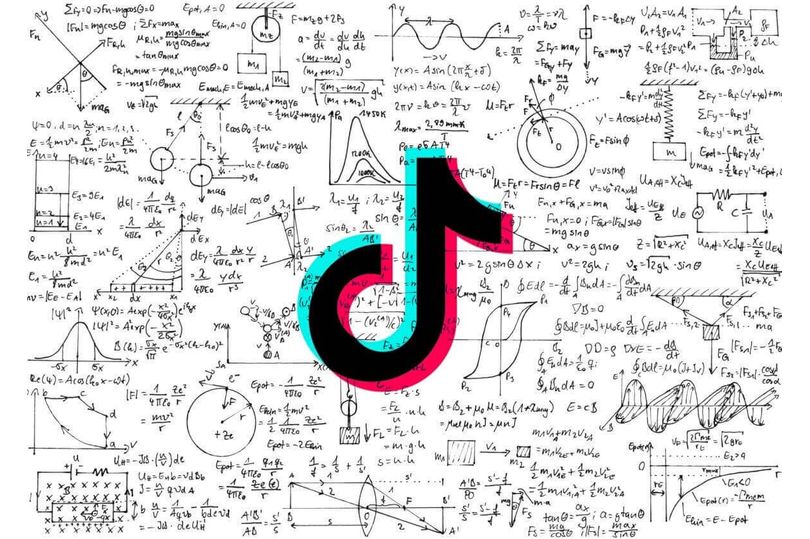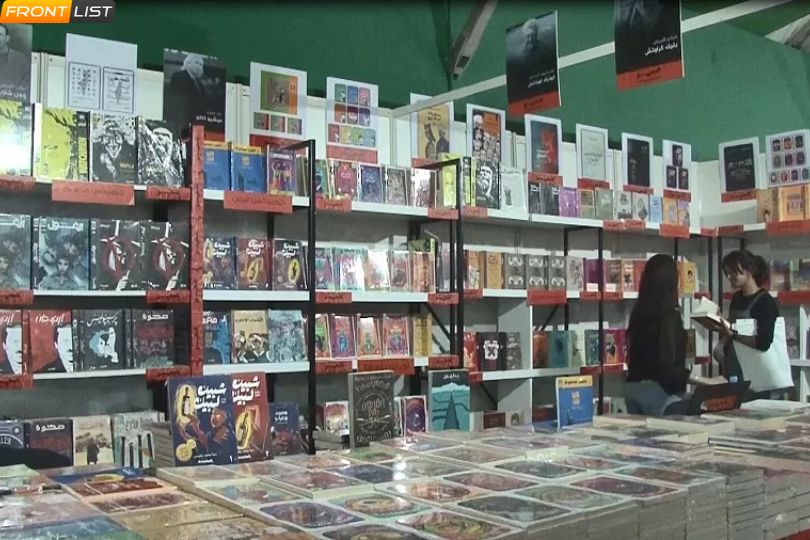With algorithms, Tiktok changes book publishing
on Aug 09, 2022

In 2016, TikTok began as an app for sharing videos of lip-syncing and dancing to music which gets viral. Its extreme success as the world’s most downloaded mobile app since early 2020, owes something to the universal appeal of music, and a bit of its small technical features which make it very easy and effective to use, but most of all to its famously irresistible recommendation algorithm, which measures minutely what one responds to and looks through its vast bank of freely surrendered videos to serve up what someone may not even be aware of one’s likes. Digital advertising has long sought out characteristics inadvertently disclosed in online life, but TikTok does the work ahead of time by hiving into ever-more-specific niches for the user. In contrast to previous social media platforms, which encircle the decisions of people chosen by users to surround themselves with, this app opens the tiny window in one’s hand to the entire inexhaustible world.
TikTok’s accessible reward of virality makes it democratic, unlike other platforms that multiply the benefits of already being famous. Tech writer Nathan Baschez memorably called it “by and for randos.” It invites people to craft a publicly irresistible face with the promise of a waiting public, and people rocket to visibility out of nowhere.
Although the app is addictive and fun and confined to what it is doesn’t necessarily make it “bad,” but its ubiquity demands attention, and because tech always chases the next new thing, its signature characteristics are spreading beyond its little frame. For instance, Mark Zuckerberg’s Meta, in the last few weeks has modified its main two platforms, Facebook and Instagram, to mimic TikTok’s strengths. In Facebook’s case, there will now be internal competition for the posts of your “friends and family” via posts from strangers that promise virality whereas Instagram is now nudges users in the direction of seeing and lingering on more viral content from strangers. Cal Newport in The New Yorker interestingly pointed out what the social media giants have to lose if they surrender their carefully assembled social connections assets for clusters of strangers.
This more comprehensive embrace of virality marks another step in the direction of social media’s existing incentives—to do whatever it takes to keep everyone’s attention in front of advertisers and to collect as much information from as many people as possible—and has made TikTok, like Instagram before it but more so, a powerful engine specifically for selling books. Currently, seven of the fifteen books on the New York Times bestseller list owe their audience to TikTok with four of these by author Colleen Hoover, a hitherto little-known TikTok phenomenon. Observers have celebrated that this surge of spontaneous book promoting gives voice to the average reader, resuscitates the “backlist” of previously published books (TikTok announced its own #BookTok book club last month, with Jane Austen’s Persuasion first up), compensates to some extent for the disappearance of book criticism, and appears to foster new readers, especially among demographics not reached by traditional book marketing. And the pandemic, of course, gave it a real-life connection vacuum into which to balloon.
It is often observed that BookTok is effective at selling books because it rides the velocity of individual emotion which is also the fundament of our connection to books, particularly fiction. (BookTok, like the early history of the novel, is a zone friendly to women.) Unfortunately, TikTok is not so good at conveying complex information. A BookTok viewer sees a book’s cover and its reader’s expression hears a few words of enthusiasm over a catchy song and then moves on to the next thing. Analogously formerly hot book Instagram (#Bookstagram) is very much about visual style: Bookstagram viewers see a book’s cover in a beguiling setting, with a mug or a cozy throw or a spray of flowers, and a brief caption (2,200 characters max).
As book veterans gazed in wonder at the BookTok sales spike, another piece of news came in. A UK study reported that TikTok is the country’s fastest-growing source of news, with nearly a quarter of US adults, saying they get their news from the video-sharing app. Given virality’s reliance on reflexive emotion and other technical features of the app, TikTok has proved a fertile ground for misinformation.
Are such mediums superficial to an ominous degree? Is an image of a book’s cover or the throb of appreciation in a reader’s voice even analogous to engagement with the complex experiences and developed arguments that we look to books to sustain? For one thing, these sensations are readily bent to commercial pressures. Bookstagram influencers felt they should be paid by publishers for their contributions to book promotion. The marketers behind UK’s Penguin Teen imprint were interviewed for the marketing site ClickZ about the ways traditional publishers are adapting to the personal style of BookTok, cultivating influencers to produce recommendations that feel spontaneous. Oprah magazine described how publishers are contracting with influencers to try to capture their juice. How do these relationships work exactly? Those who grew up with a brighter line between advertising and editorial find the fact that viewers do not seem very concerned, when it comes to the profession of Influencing, with the difference between a hired opinion and an actual one pretty startling.
The other feature that image-bound Instagram and TikTok, as well as YouTube and the audio form podcasts, the share is that they don’t “link out.” If a link gets displayed on Instagram or TikTok it can’t be clicked on and the viewer has to capture it somehow and type or paste it into a browser. Also, if a TikTok video refers to an external source such as a news article, it can only show it visually with a fleeting image. The UK report noted that among those who get their news from TikTok, fewer than a quarter gets it directly from a news source, the rest comes filtered through videos of “people they follow” and “family and friends.” Tech commentator Elena Cavender refers to this as TikTok’s “lack of primary sources.” Whereas, when people use Facebook and Twitter for news, Facebook and Twitter are at least delivering to them actual, verifiable sources. Information on Instagram and TikTok is locked within the frame, and delivered by the person in the frame, dependent on their retelling and their viral energy. Matt Ingram wrote last week for the Columbia Journalism Review on how the TikTokification of Meta accelerates disinvestment from traditional news, on top of “the continued down-ranking of professional news content” by Facebook algorithm.
Other sources of digital news and information that are captured in a retelling and dependent on the viral appeal of “personalities” raise similar questions. The Nieman Lab did a story recently on a popular YouTube “news” feed called Channel 5, with millions of viewers, earnings in the hundreds of thousands, and a recent movie deal, which began as a parody account and evolved into something that uneasily enacted what it mocked, traveling in a graphics-covered van with fake satellite dishes. Its founder Andrew Callaghan “doesn’t do journalism in the traditional sense,” but “believes that independent creators like him will gradually replace the traditional pillars of journalism.” Watching a “Channel 5” video you hear in an “authentic” way from the people on the street that the official-looking van attracts, but you are not connected to any vetted source of information. “I pretty much create news content for the disengaged,” Andrew Callaghan said. Similarly, podcasts, which have gobbled up a huge share of the news consumer’s attention, have to refer to the listener) to the online notes for documentation of their sometimes casually delivered apercus. Hugh Eakin wrote a couple of years ago in Harper’s about how the conversational disclosures on podcasts do not seem to be bound by traditional norms of fact-checking and verification. Also, Bloomberg had a story about people paying to be on podcasts, a strict no-no in traditional news.
In a moment when ideological polarization has challenged the value that Americans ascribe to time-worn mechanisms for collecting, verifying, conveying, preserving, analyzing, and challenging information and art, it is inspiring when these new forms rise up to awaken and energize new audiences. But what we need to think about is how the few seconds that a viewer spends with an image will connect them to a larger ecosystem of verifiable truths and enduring ideas. How can these forms’ connection to books and ideas be not just about nice tableaux and ready emotion, but also about the subtlety and complexity that books and other labored-over media anchor us to in this information-starved age? The question is how bite-sized discourse can remain tethered to something larger than itself and can avoid becoming a free-floating engine of invention indiscriminately fixing on whatever captures attention in the fleeting moment.



.jpg)






.jpg)

.jpg)

.jpg)
.jpg)
.jpg)
.jpg)










Sorry! No comment found for this post.